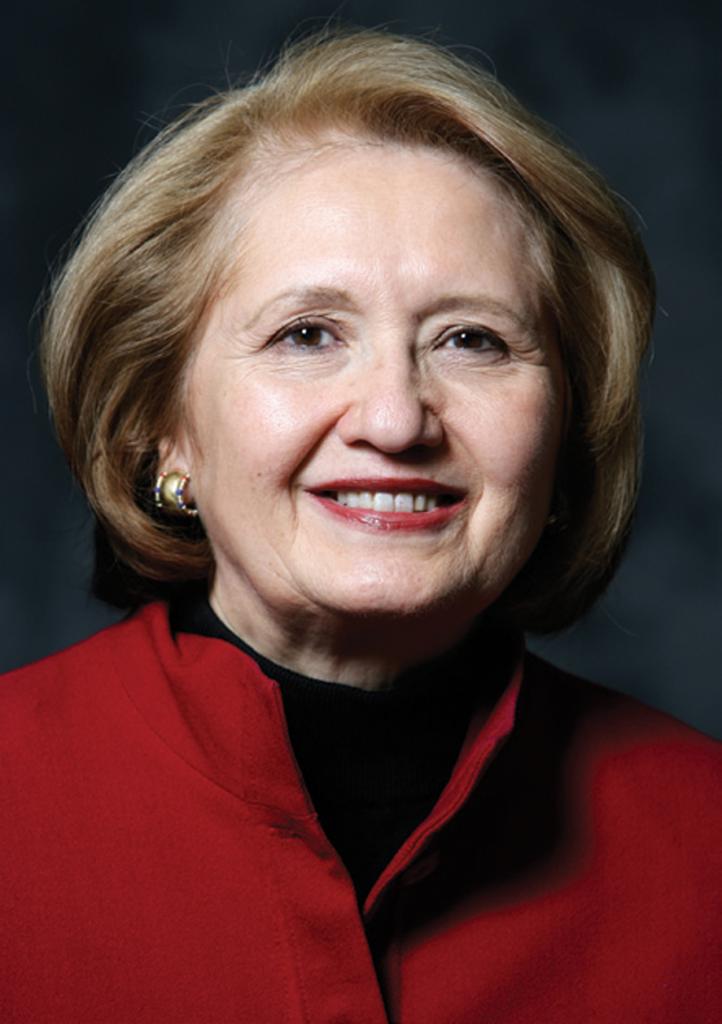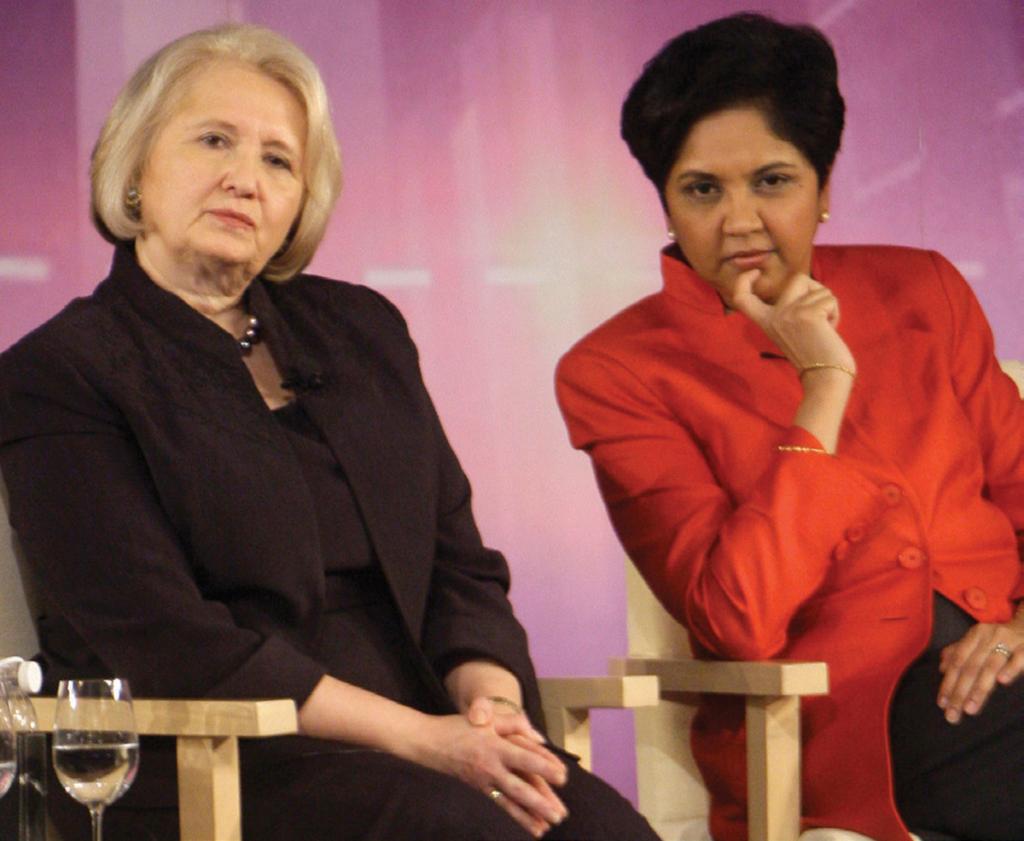Overview: Interview with Ambassador Melanne Vereer
- Page ID
- 16906
4
Overview: Interview with Ambassador Melanne Vereer
Solutions to Global Challenges Require Women’s Participation: Interview with Ambassador Melanne Verveer

Figure 0.2: Melanne Verveer is the first ambassador-at-large for the U.S. State Department’s Office of Global Women’s Issues.
In April 2009, Melanne Verveer was appointed ambassador-at-large for global women’s issues by President Obama to promote women’s empowerment in U.S. foreign policy. She shares her passion for achieving the political, economic and social empowerment of women in this interview.
Q: You are the first ambassador-at-large for global women’s issues. Why are these issues so important to address now?
Ambassador Verveer: There is recognition today that we cannot possibly solve our global challenges, whether they concern the environment, governance, economic policy or security, unless women are full participants. We have to move “women’s issues” from the margins to the mainstream and recognize that the issues are not only about women’s roles, but are about the kind of world we want to create. To the extent that women participate, succeed and help make a difference, everyone benefits — men and women, boys and girls.
Q: Why is women’s participation so vital to the well-being of all societies?
MV: There is a mountain of data that correlates investments in women to poverty reduction — even to decreases in corruption — which I think we need to take very seriously. Similarly, there are studies on the consequences of gender inequality. For example, the World Economic Forum puts out an annual report called the Gender Gap Report. It measures the progress of men and women in terms of economic participation and opportunity, educational attainment, political participation, health and survival. Where men and women are closer to equal achievement in all of those areas, those countries are far better off. Where that gap is wider, it’s a different story. This has been repeated in study after study. We have to pay attention to the hard data, and what the data tell us is this is the smart thing to do, to invest in women and provide them with opportunities to fully participate in their societies.
Q: In 1995 the landmark U.N. Fourth World Conference on Women was held in Beijing. What did it accomplish, and is it still relevant?
MV: It brought together 189 countries to really look at the progress of women and specifically to adopt a Platform for Action. That Platform for Action focused on a number of critical areas, including women’s access to education, health care, economic and political participation; women’s ability to be free from violence; to have legal rights; the girl child; the role of women in conflict societies; and the role of women in peace and security. It was a major, ambitious blueprint that the United States and 188 other countries signed on to, making commitments to go back to our own countries to chart progress for women and girls. That was significant then, and it continues to be extremely significant today. Fifteen years later, the Platform for Action is still the blueprint against which many of our countries, NGOs and others measure the advancement of women. There has been a lot of progress, but there still are challenges. Laws have been passed. They haven’t always been implemented, but much has changed for the better.
Q: Where has the most progress been made, and where does the world still have work to do?
MV: Girls’ education is in a much better place than it was when the Beijing Platform was adopted, but we are not where we need to be. While more and more girls are in primary school, we don’t have anywhere near the numbers with access to secondary education. Investing in a girl determines what her future will be like — and her potential family’s future — her economic possibilities, her health and her children’s education. More women are being elected to parliaments, but the numbers are still below what they should be, given that women make up half the population of the world and it is important to have their experiences and talents involved in policymaking.
Economically, women are participating in more significant ways. Microcredit, for example, has had a transformative impact, lifting up the poorest of the poor and creating livelihoods so people can sustain themselves and their families. Laws have been passed dealing with violence against women, family law reform and other intractable issues. Now such laws must be better implemented and enforced. There is a definite record of progress. Governments, civil society and those who have charted this path toward a better future can take justifiable pride in that, but we have to keep at it to reach our goals.
Q: What are the most important emerging global women’s issues?
MV: We still have an agenda to complete. We have to be more creative. One of the challenges is to bring new tools to the table, tools that do a better job enhancing economic progress. Microcredit is one of the great financial tools, but we need broader financial inclusion: savings and other ways that poor people can be insured against cataclysms of one kind or another. Financial tools can bring creative solutions, as can technology. I personally think that mobile technology has the potential to be as transformative as microcredit has been. Cellphones are more accessible to the poor. Cellphone applications are being developed to help improve health care. The cellphone is being used for banking, teaching literacy, safeguarding women from violence and creating economic opportunities.

FIgure 0.3: Melanne Verveer with PepsiCo Chairman and Chief Executive Officer Indra Nooyi.
There was and is an environmental component of the Beijing Agenda, but climate change itself was not specified. It is something that we have come to understand better in the time that’s elapsed since 1995. Here again we see the role that women have to play, particularly in regions most severely affected by climate change and vulnerable to natural disasters such as drought or floods. We need to engage women as agents for adaptation and mitigation.
One important example concerns cookstoves. The black carbon emitted from dirty cookstoves — on which millions of poor people cook — is detrimental to the health of millions of people. The Global Alliance for Clean Cookstoves is creating a market for low-emissions cookstoves, to help reduce the damaging health and environmental impacts of black carbon. It’s an economic empowerment issue because selling and maintaining cookstoves is a new green industry, especially for women. Cooking is not the major contributor to climate change, but low-emissions cookstoves can address one aspect of it.
Q: What role must men play in ensuring women’s empowerment and advancement around the world?
MV: Men have a central, critical, important role to play. Women’s progress has never come through women’s efforts alone. We cannot possibly solve some of the most serious challenges that women confront — the inequality of women around the globe, the scourge of violence against them — unless men are involved in solutions. The way boys are raised, the image of what a man should be and how that’s presented, are opportunities to develop good habits in the next generation. We know the critical role that religious leaders — who are mostly men — can play. We need political will and enlightened male leaders at the highest levels of government, multilateral institutions and companies to become full participants in the advancement of women’s empowerment.
Q: The United States does not have a perfect record on women’s issues. Our Congress has a lower percentage of female elected officials than some foreign parliaments and has not ratified the U.N. Convention on the Elimination of All Forms of Discrimination against Women (CEDAW). Domestic violence and human trafficking are issues in the United States. Is the United States in a position to lead the world on women’s empowerment?
MV: We have a lot of work to do at home, as every other country does. In no country in the world are men and women equal. But I think the fact that we address many of our problems or are working at addressing them does certainly resonate internationally. We’ve created legislation to combat violence against women, which was first adopted in the 1990s. Our trafficking law wasn’t passed until 2000, but we worked at it and it is a model for the world. It may help other countries to see the path we took to address the challenges, how we created coalitions, and why we set prevention, prosecution and protection as lynchpins in the violence against women law and in the trafficking law (Victims of Trafficking and Violence Protection Act of 2000).
I often talk about the women who, in 1848, traveled to that first equal rights convention in Seneca Falls, New York. And I often think of the diary of a young girl who looked back on the course that she chose to take, which was to get in a stagecoach, leave her home and to make that trip. She did it because in the United States at the time, women could not vote. She could not keep her meager earnings — if she had meager earnings. She could not access formal education; she could not get a divorce if she found herself in a terrible marriage. She knew life needed to be better and she went off on that journey to the equal rights convention not knowing, as she said, if anybody else would be on that road. Well, we know what progress our country has made. We are still on that road. Women everywhere are on that journey and we need each other. And — just as importantly — we need good men to join us as they, too, traveled to the Equal Rights Convention. We may be in different places on the journey. The United States has come a long way from 1848, when that young woman decided to make the trip to Seneca Falls, but we still have a ways to go. All over the world, women who face difficult situations need to chart progress. So we’re not perfect, but we work at these issues and in many ways we have succeeded and can help others address similar challenges.

